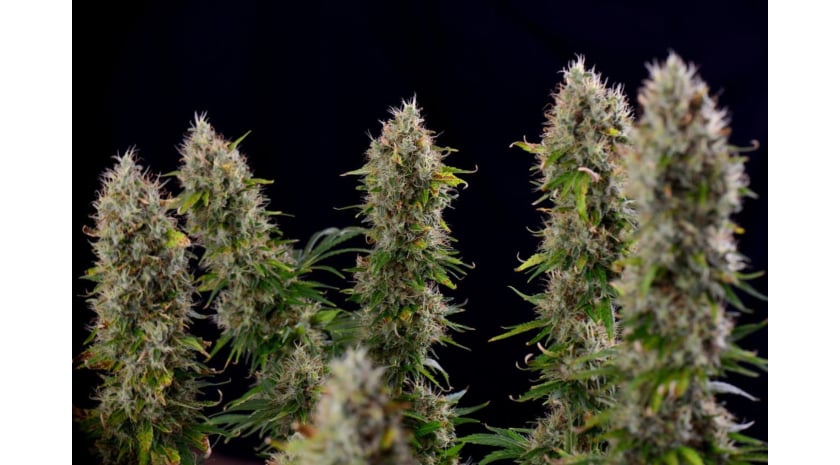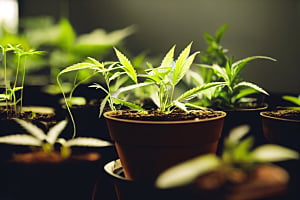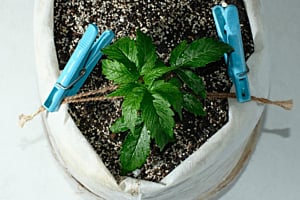Contents
What is a good yield for an autoflower?
How to get bigger yields from autoflowers: 13 proven tricks
Grow high-yielding autoflowers like a pro
Are you wondering how to get bigger yields from autoflowers? These crops flower according to their age instead of depending on a light cycle. Due to their quick maturity rates, they require skilled hands and extra care to deliver top-notch results.
What can you do to increase the yields from your auto cannabis plants?
Keep reading to learn the best tricks to turn these non-photoperiod seeds into highly rewarding crops. Whether you’re a novice or an expert grower, we guarantee these tips will boost your harvests.
Let’s dive in.
What is a good yield for an autoflower?
Autoflowering strains contain ruderalis genetics, making them hardy, resilient, and fast-growing. Most cultivars take 60–90 days from germination to harvest. Others may mature faster or slower.
Growers prefer these strains since they grow quickly and require fewer nutrients than photoperiod marijuana plants. With these benefits, what’s the maximum yield autoflower cultivars can reward you?
They typically deliver 3–5 ounces per outdoor plant. Cultivators can expect these strains to yield 12–14 oz./m2 indoors. Some autoflowering seeds may reward you with up to 20 ounces or more per crop with proper care.
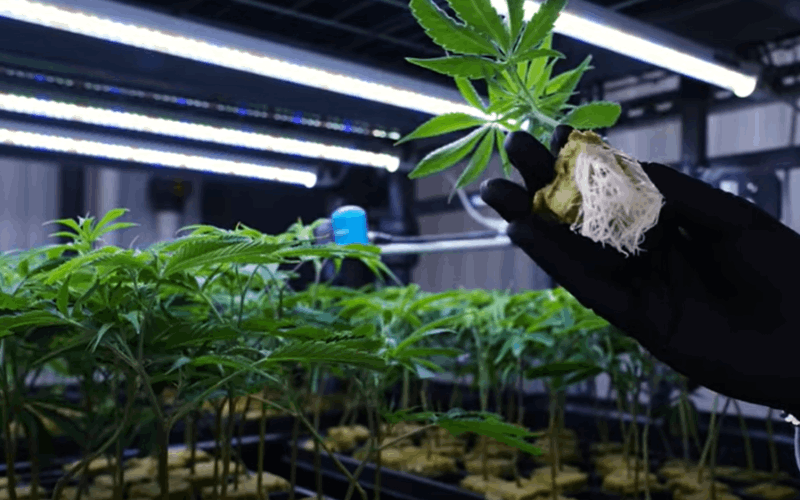
The main factors that influence output include your chosen cultivar and the growing conditions. Cultivating indoors may result in higher yields since you control the climate.
Autoflowers are resilient to harsh environments and can reward you generously when grown outdoors. The rule of thumb is to cater to their needs to promote higher yields.
How to get bigger yields from autoflowers: 13 proven tricks
Many people still claim that autoflowering strains deliver low yields despite growing faster. While that might be true, numerous autos can produce massive harvests several times a year.
Wondering how to get bigger yields from autoflowers? Getting generous rewards from these non-photoperiod strains requires some extra attention.
Below are 13 proven tricks to ensure your autoflowers thrive and mature into high-yielding cannabis plants.
1. Genetics is king
Before employing any autoflower grow tips, ensure you select the right strain with a track record of producing massive yields. Before settling on a specific cultivar, research it to find out if it packs the right genetics.
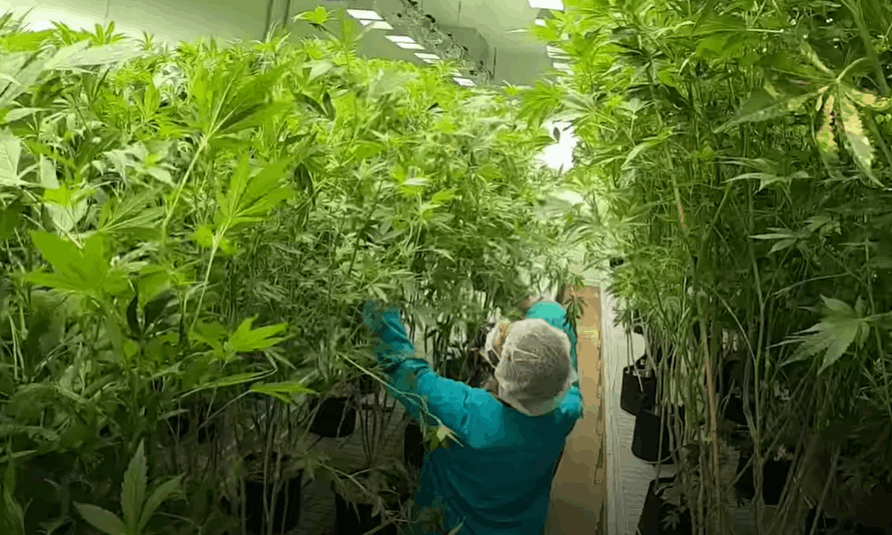
What’s the highest yielding autoflower? Some growers recommend starting with a beginner-friendly variant like AK-47 autoflower, which offers above-average results.
Consider the strain’s effects to ensure it delivers your desired benefits. Select a cultivar with the terpenes that give it the taste and aroma you’ll enjoy after harvesting.
If you’re a medical user, consider growing marijuana plants that yield potent buds with less THC and numerous therapeutic benefits. A good example is the popular CBD Cheese autoflower that may relieve stress, reduce pain, and improve your sleep quality.
Genetics also determine if the plants will be resilient to harsh weather, mold, and common diseases. If you’re planning to grow outdoors, select a hardy cultivar like Jack Herer autoflower that thrives in various conditions.
2. Germinate in the final pot to avoid stress during transplanting
Ready to discover how to grow big autoflowers after selecting the right strains? A top tip is to germinate the seeds in their final pot. Transplanting these plants causes stress since they only stay in the vegetative stage for a short time.
The stress may reduce the growth rate and result in small crops that produce fewer buds, leading to low yields. While photoperiod weed strains have time to recover from transplanting, autoflowers rarely survive the pressure.
Besides growing them directly into the final pot, you can use the paper towel method to germinate the seeds. Once they sprout, transfer them into the large container.
3. Opt for bigger pots
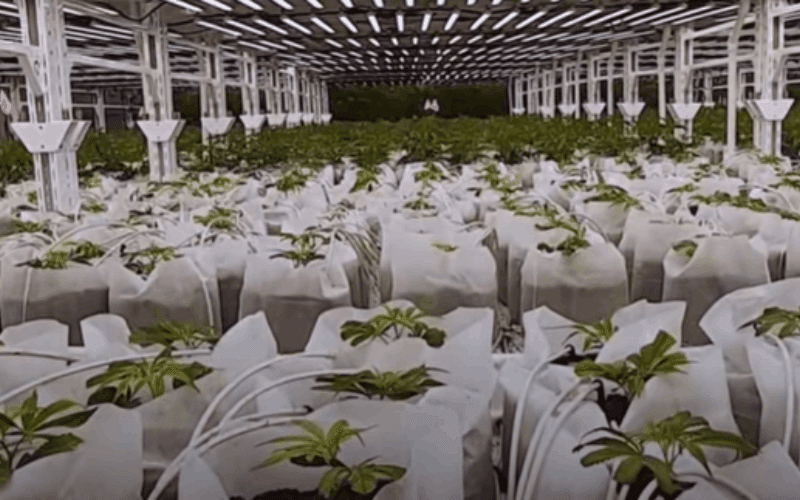
How big can autoflowers get? The capacity of your growing container primarily affects how much the weed plants will stretch.
For cannabis seeds to mature into big and highly rewarding crops, they require a sizable pot that promotes maximum root development. Bigger containers allow for more extensive growth, leading to a large and bushy weed plant.
Cultivating your autoflowers in a small container restricts the roots from developing fully, resulting in short crops.
Select the right size, since extra-large pots may allow plants to grow beyond your desired extent. This massive height may be problematic if you’re an indoor cultivator who wants to conserve space for more weed crops.
4. Maintain an 18/6 light cycle from seedling to harvest
If you’re on a tight budget, purchase a cheap grow light for weed and grow big autoflower plants indoors.
Some cultivators leave the bulbs on for the entire day to increase the photosynthesis rate and promote growth. Providing 18 hours of light and 6 hours of darkness from seedling to harvest can be highly rewarding.
This light cycle won’t dry your pockets with high utility bills since the bulbs are off for a quarter a day. As an outdoor grower, you can’t control the daily sunlight the crops receive, so opt for a sunny location.
When setting up your indoor room, place your lights strategically. Bulbs that are too far cause slow growth, and too near may burn your crops.
Ensure you follow the correct humidity chart for autoflowers to prevent the temperatures from rising beyond optimum levels.
5. Maintain healthy soil
When thinking of how to grow big autoflowers, consider providing the crops with healthy soil that promotes root development.
Before planting the seeds, it’s advisable to test the pH levels of your growing medium. Most autoflowering strains prefer slightly alkaline conditions (5.5–6.5) to promote proper growth.
If the soil conditions are too acidic or alkaline, the crops can’t absorb nutrients like magnesium and calcium. Provide your autoflowers with a loose and airy medium that promotes the development of deep roots.
Though the plants require nutrients to thrive, avoid adding excess fertilizers in the soil to prevent nitrogen burn. When the crops are two weeks from harvesting, provide them with pH-adjusted water to eliminate the accumulated mineral salts.
6. Use LST instead of HST
When cultivating photoperiod strains, you can use high-stress training (HST) techniques that involve injuring the plants to trigger growth. Popular methods include topping, fimming, and defoliation.
Photoperiod cultivars stay in the vegetative stage for longer, giving them room to recover from these HST techniques.
Does topping autoflowers increase yield? Since autos mature quickly, they don’t have enough time to recover from the stress of these methods. Applying HST tactics may hurt your crops, slow their growth, or cause death.
For the best results, apply low-stress training, which involves manually bending the branches instead of cutting them. LST on autoflowers, like the tie-down method, can promote lateral growth, increase light exposure, and encourage more bud development.
Employ the Sea of Green (SOG) technique to maximize your available space and grow numerous plants. This method enables you to cultivate as many crops as possible, leading to higher yields per square meter.
7. Provide your autoflowers with the right nutrients
Cannabis plants require adequate macro and micro-nutrients to ensure they grow healthy and yield excellent results. Avoid overfeeding your autoflowers with fertilizers, as it may harm your crops or cause death.
Unlike photoperiod cultivars with massive root systems, autos are relatively smaller and require fewer nutrients. If the soil is healthy, the plant can grow from germination to vegetation without needing supplements.
Only provide minerals to the young plants if they show nutrient deficiency signs like leaf discoloration. When the crops reach flowering, feed them with low doses of fertilizer to boost the nitrogen, phosphorus, and potassium levels.
These nutrients promote healthy crops that are resistant to pests and diseases. They also encourage bud development.
Some growers also opt for organic soils, which provide adequate nutrients to take the plants from germination to harvest.
8. Don’t overwater your auto
Cultivating huge autoflower crops requires you to avoid rookie mistakes like overwatering, which can cause wilting and stunted growth.
How can you avoid this cultivation problem? Instead of following a fixed schedule, only provide the plants with water when needed. Stick a finger into the growing medium and proceed with the process if the soil is dry.
Placing your autoflowers in extra-large containers may also cause flooding, leading to root rot and nutrient lockout.
When you overwater your marijuana crops, they exhibit symptoms like discolored (yellow or brown) leaves that appear curled or drooping. The roots may also become twisted or slimy.
Wondering what to do with overwatering your autoflowers? The best way to fix this problem is to leave the soil for about three days to dry out.
9. Consider using fabric pots
Besides the container size, the material also matters when aiming for a huge autoflower grow. The traditional plastic or ceramic pots may cause root bound, leading to stunted growth.
Fabric containers are breathable and allow air to pass through your growing medium. Why is this essential? It helps maintain optimal temperatures and allows the soil to dry faster.
Fabric pots also prevent overwatering or accumulating mineral salts in the growing medium since water can pass through. Autoflowers in these containers have less risk of developing fungal diseases.
Another reason you should consider fabric pots is to promote air pruning. When the roots outgrow the container, they make contact with oxygen, prompting them to cut themselves instead of spiraling.
10. Introduce beneficial fungi into the growing medium
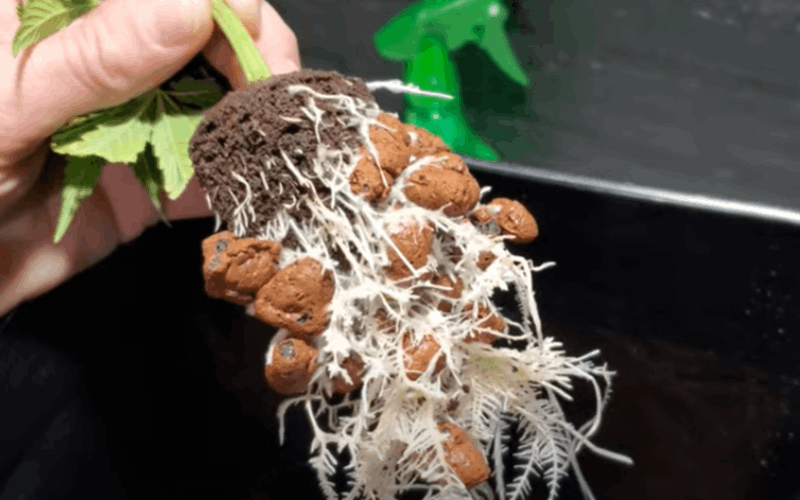
Autoflowers only take a few weeks to be ready for harvest. After germinating, these plants require a rich growing medium that promotes a healthy root system. Adding beneficial fungi to the soil can stimulate the crops to mature faster.
Mycorrhizae form a symbiotic relationship with your autoflowers. The plants supply them with carbohydrate sugars produced through photosynthesis. The fungi, in return, help the crops absorb essential nutrients like nitrogen and phosphorus.
Mycorrhizae may also protect the autoflowering plants from pathogens by hindering their penetration into the roots. These fungi increase the absorption rate and promote massive harvests.
Add sugary solutions like fruit juice to the growing medium to attract mycorrhizae. You can also add nutrient-rich soil since they contain these fungi. Commercial cultivators can purchase inputs containing mycorrhizae and add them to the growing medium.
11. Use CO₂ to fuel photosynthesis
Wondering how to get bigger buds on autoflowers? One of the essential factors is providing carbon dioxide (CO2) to promote photosynthesis.
If you’re growing greenhouse cannabis, add this gas into the room by investing in CO2 tanks or generators. Other cheaper methods include using dry ice or combining baking soda and vinegar.
After supplying this gas, ensure sufficient illumination, since the crops require light and CO2 to produce energy.
12. Use progressive harvesting
When harvesting your autoflowers, only collect the top buds which are fully ripened. If some nugs on the lower branches aren’t entirely mature due to less light exposure, leave them for several days.
Practice the perpetual harvest method and enjoy multiple harvests all year long. It involves planting autoflowering seeds in intervals of 2–4 weeks to keep crops at different growth stages.
After harvesting your first batch, you’ll have autoflowers entering the flowering period. Within a few weeks, you’ll be ready to collect more buds.
13. Use reverse osmosis water and the right minerals
Reverse osmosis (RO) water goes through a filtration process that removes about 99% of impurities and dissolved salts.
Although RO water is available for sale, setting up a home filter system is best to save on costs. Since this aqua contains no impurities and minerals, you’ll need to add nutrients to the growing medium.
Buy CalMag additives to supply calcium and magnesium to your cannabis plants. You may also alternate between RO and normal H2O, since tap water contains essential nutrients. Test the pH levels to ensure they’re within the 5.5–6.5 range.
Grow high-yielding autoflowers like a pro
Why are my autoflower yields so low? You’ll never ask this question again after employing our 13 best strategies. Whether indoors or outdoors, you’ll always have a smiling face when collecting a bountiful harvest.
Are you ready to start your marijuana growing journey? Grab premium autoflowering seeds at SeedSupreme and enjoy amazing discounts on your favorite high-yielding strains.

 THC
THC